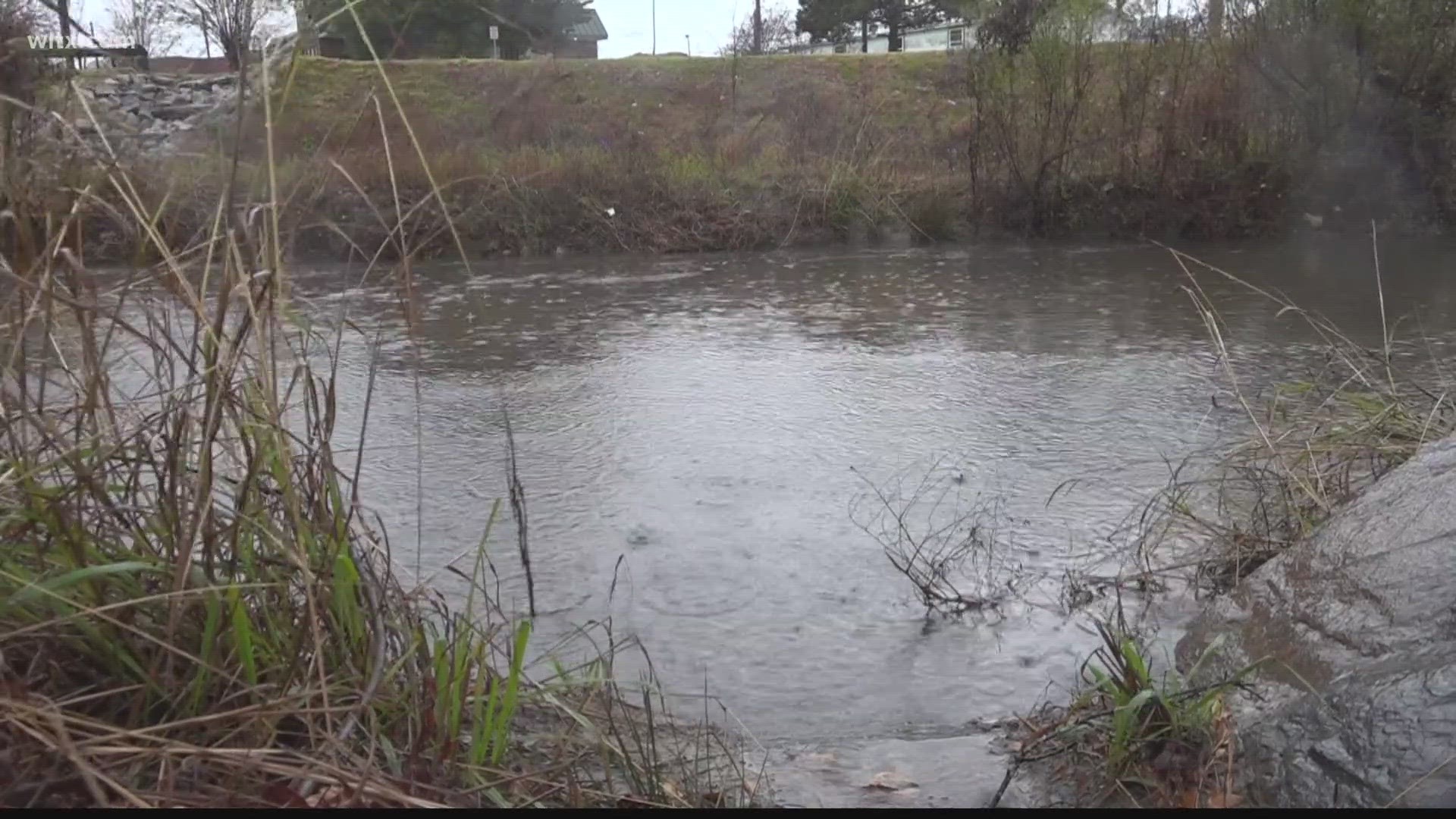COLUMBIA, S.C. — The South Carolina Department of Health and Environmental Control (DHEC) is taking public comment to figure out the best solution to get rid of the high levels of lead found in the northeast section of the Gills Creek Watershed.
“It is very impacted by human behavior but it also very much impacts us since we are all around it,” Gills Creek Water Association Executive Director Bailey Parker shared.
As Parker explains, her organization advocates for and protects the land that drains water into Gills Creek. The watershed runs from near Sesquicentennial State Park down through Forest Acres and the City of Columbia before pouring into the Congaree River.
“We have built our homes and our shops and businesses very close to this creek so that when there are rain events and it floods, it affects us in a big way,” Parker said. “But also the fact that we have built our homes and shops and parking lots, these surfaces that drain water off very quickly into the creek, it affects the way the creek behaves, makes flooding a little more likely, and it increases the pollution and degradation of that creek.”
Now, DHEC says it’s found an elevated level of lead through routine water quality testing. A 43-page document, called a total maximum daily limit (TMDL), outlines the impacts of lead toxicity on humans, like hypertension and neurological damage, although DHEC tells us there are no drinking water intakes nearby.
As the TMDL explains, the aquatic environment can also be affected.
“Excess lead in the aquatic environment can affect plants, vertebrates, and invertebrates,” the document reads. “In animals, lead toxicity may manifest as growth disturbances, anemia, neurotoxicity, immune and reproductive dysfunction, and premature death. It may bioaccumulate leading to increased exposures for animals feeding higher in the food chain and for nonaquatic animals feeding in and around lead-contaminated waters. Lead is also deleterious to aquatic plant life and can cause reduced photosynthesis, mitosis, water absorption, and ultimately growth inhibition. Plant life may accumulate lead and become a source for organisms that consume it (USFWS, 1988, Ju-Wook Lee, 2019).”
“We’re very concerned about it. Obviously, water quality is important but it also affects public health. There are people all along Gills Creek and some of its tributaries who fish for sustenance. They eat those fish,” Parker said. “It has been shown that wildlife that exists in water that's contaminated can actually accumulate those contaminants in their tissues, in their flesh. So over time they become more and more filled with whatever pollutant or contaminant may be present and so that when people eat that, they actually get a larger amount of lead that could contaminate their bodies.”
DHEC says the lead “most likely originated over decades of small arms ammunition deposition from firing ranges into the Gills Creek Watershed.”
“There have been decades of training exercises on Fort Jackson that involve the use of ammunition and for many years, ammunition has been made out of lead,” Parker explained. “And you know when lead is left out into the environment, it leeches down into the groundwater and into our surface water into the creeks and lakes.”
News 19 reached out to Fort Jackson, which says it has gotten approval from DHEC to conduct a Resource Conservation and Recovery Act (RCRA) Facility Investigation (FI) at Boyden Arbor Pond to establish the source of lead contribution.
“I think for the most part, most of us who are affected by this are everyday people who aren't scientists, we don’t know really what should be done, we just know that something should be done,” Parker said. “So let DHEC know that you're concerned, let DHEC know that you’re watching aso that we can make sure that they follow through on the TMDL, the total maximum daily load, that’s set for the creek.”
Right now, DHEC tells me it is waiting to get the TMDL document finalized and approved by the United States Environmental Protection Agency. The department says it’s accepting public comment until 5 p.m. on Jan. 15.
To submit comments on the draft TMDL document, you can e-mail waldnes@dhec.sc.gov or address a letter to: Susan Waldner, S.C. Dept. of Health and Environmental Control, Bureau of Water, 2600 Bull St, Columbia, S.C. 29201.

